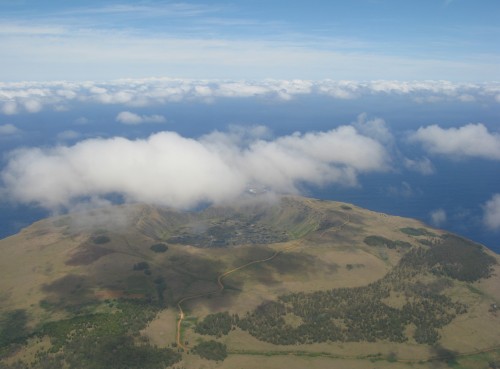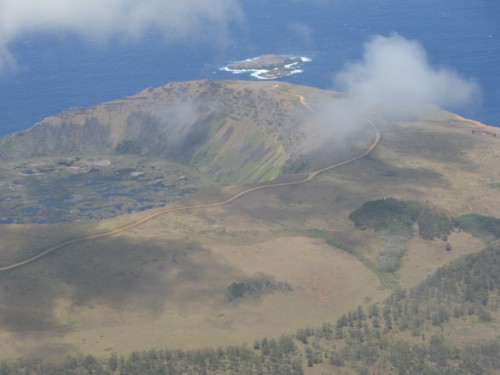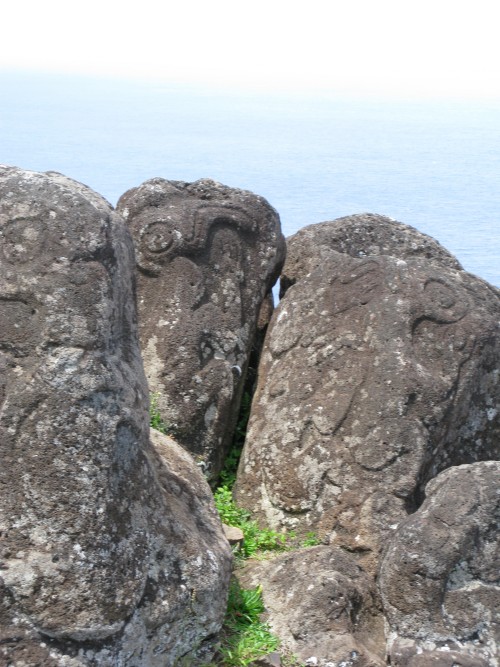Easter
Island - October 2008

Orongo is a stone village and ceremonial site at the south western tip of the island by the edge of the Rano Kau volcanic crater. Orongo is easy to reach from the village of Hanga Roa and is separated from the village by the airstrip.
I was lucky enough to have a fine view of the Rano Kau crater and the islets of Moto Nui, Moto Iti and Moto Kau Kau as we approached Easter island.
On the 7th of November 1868 the crew of HMS Topaze removed a a rare basalt moai from Orongo and it is now in the British Museum. The moai is known as Hoa Hakananai'a which translates roughly to 'stolen or hidden friend'. Hoa Hakananai'a is one of just sixteen moai that were carved from basalt. It was apparently the first moai to be removed from Easter island.
At Orongo there are 53 stone houses that were restored by the American archaeologist William Mulloy and Chilean archaeologists Claudio Cristino and Patricia Vargas in the mid 1970s.
It is believed that people involved in the birdman cult rituals lived in these houses up to the mid nineteenth century.
The birdman cult was an annual race to collect the first Sooty Tern (manu tara) egg of the season from the islet of Motu Nui, swim back to Rapa Nui and climb the sea cliff of Rano Kau to the village of Orongo. The competition was very dangerous with many contestants falling, drowning or being attacked by sharks.
The winner of the competition became the Tangata manu (bird-man) and had great power on the island, including giving his clan sole rights to collect that season's harvest of wild bird eggs and fledglings from Motu Nui. The Tangata manu would lead a dance down the slope of Rano Kau and on either to Anakena if he was from the western clans or Rano Raraku if he was from the eastern clans.
The chief god of the birdman cult was Makemake and petroglyphs of Makemake and birdmen can be found around Orongo and the Rano Kau crater.

Approaching Easter Island there is a great view of the Rano
Kau
crater

It's also possible to see the islets of Moto Nui, Moto Iti and Moto Kau Kau

The edge of Rano Raraku, where the birdman competition started

Here the islets of Moto Nui, Moto Iti and Moto Kau Kau can be seen clearly

There are numerous petroglyphs of birdman figures around Orongo

More petroglyphs of the birdman

With Hoa Hakananai'a at the British Museum


